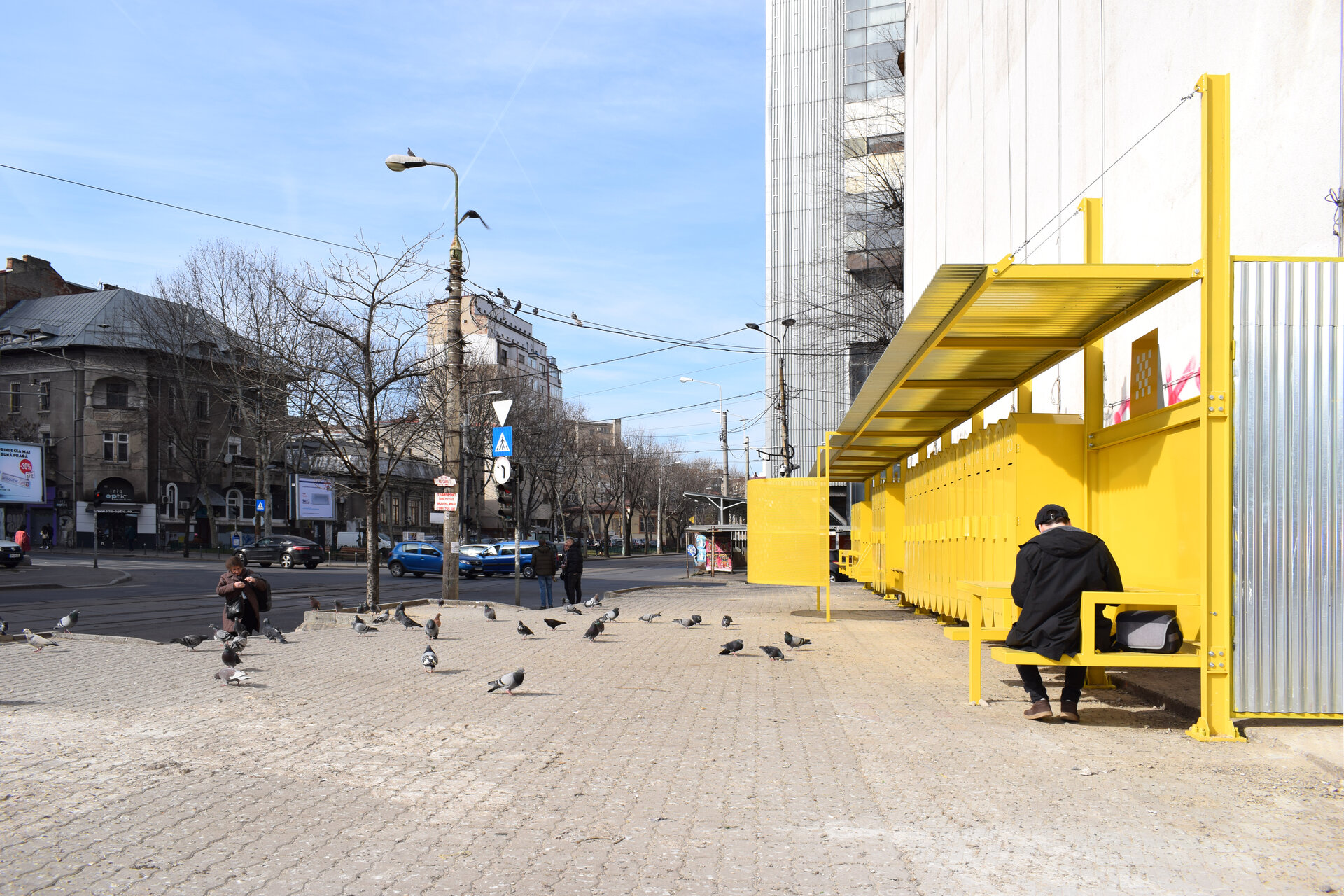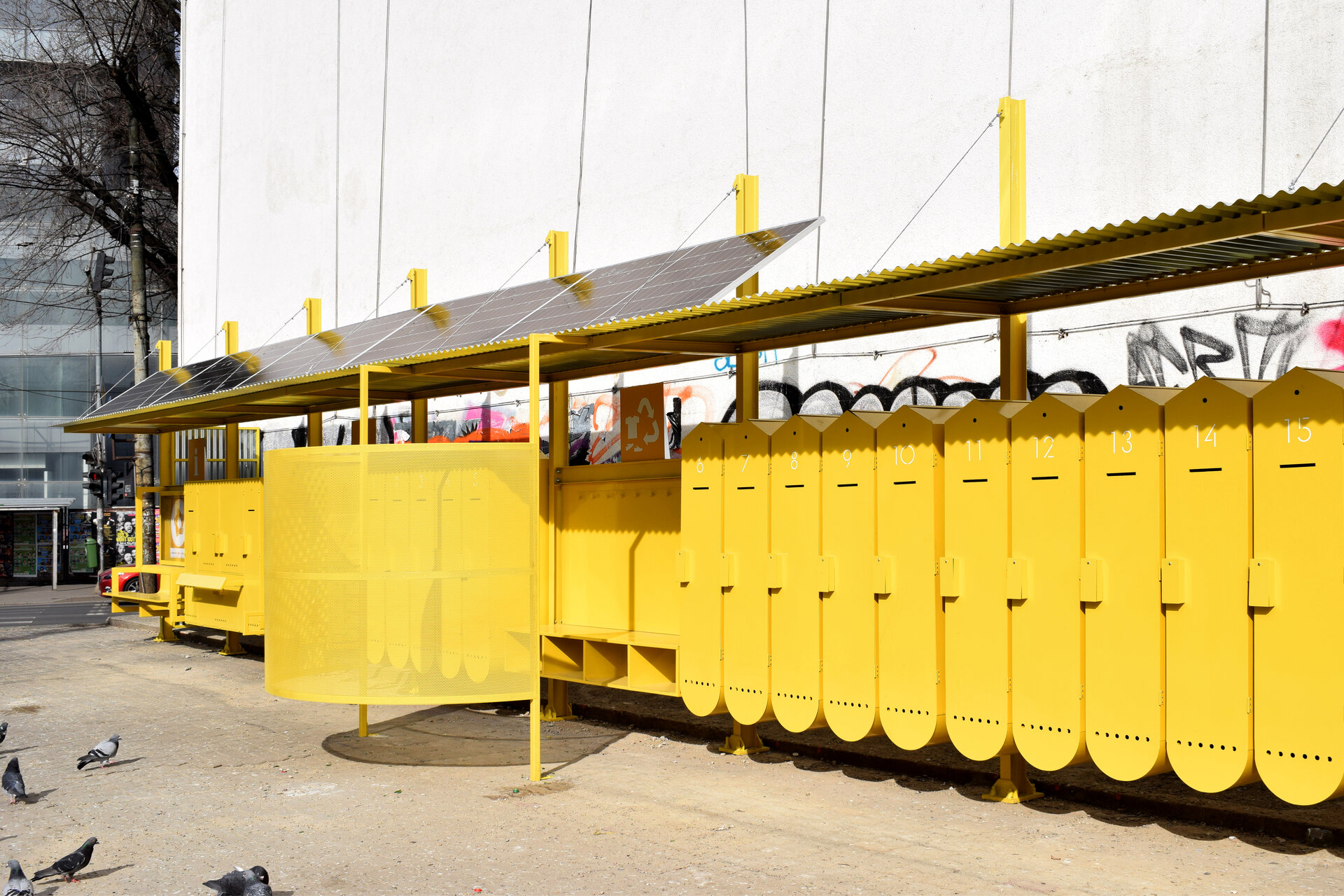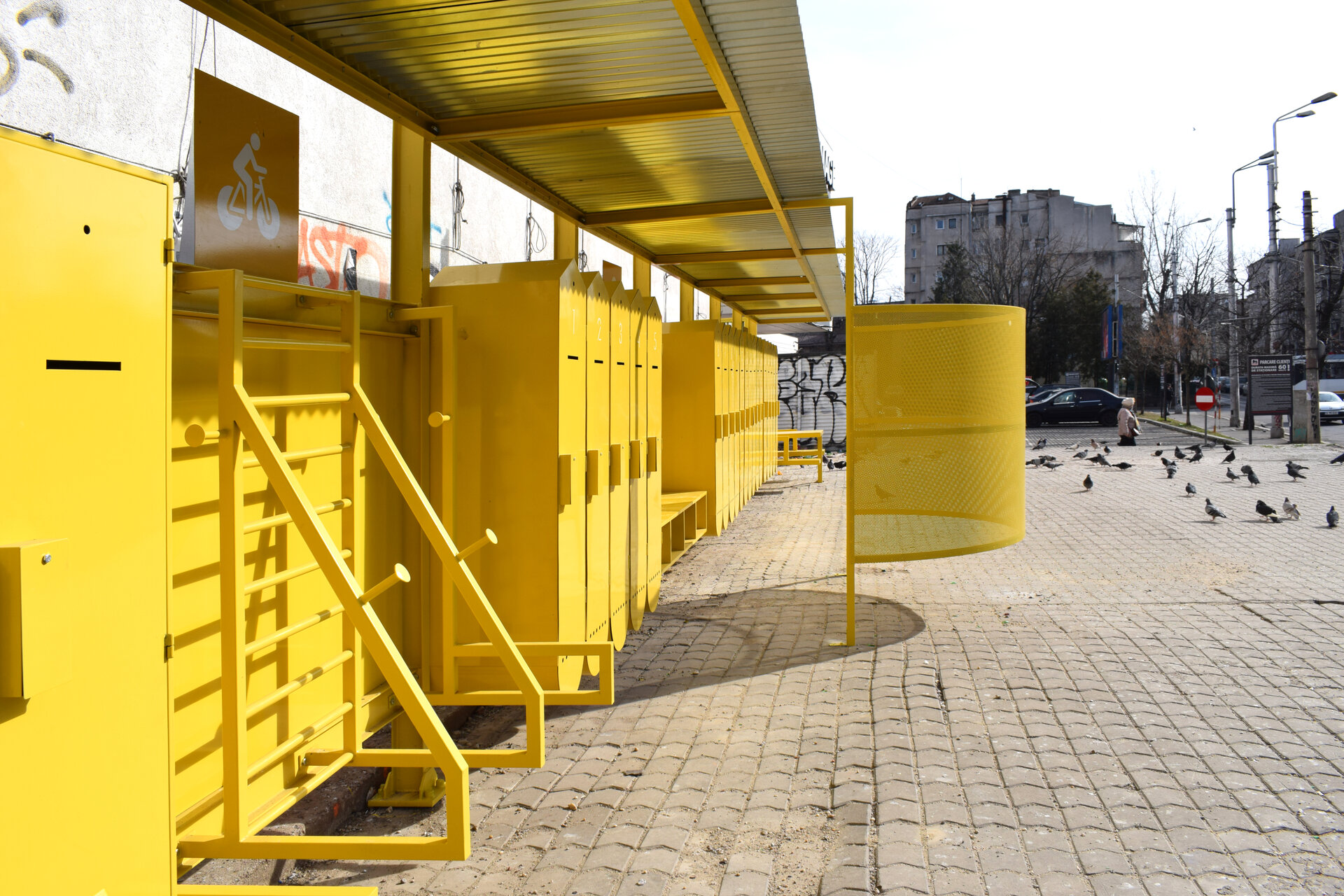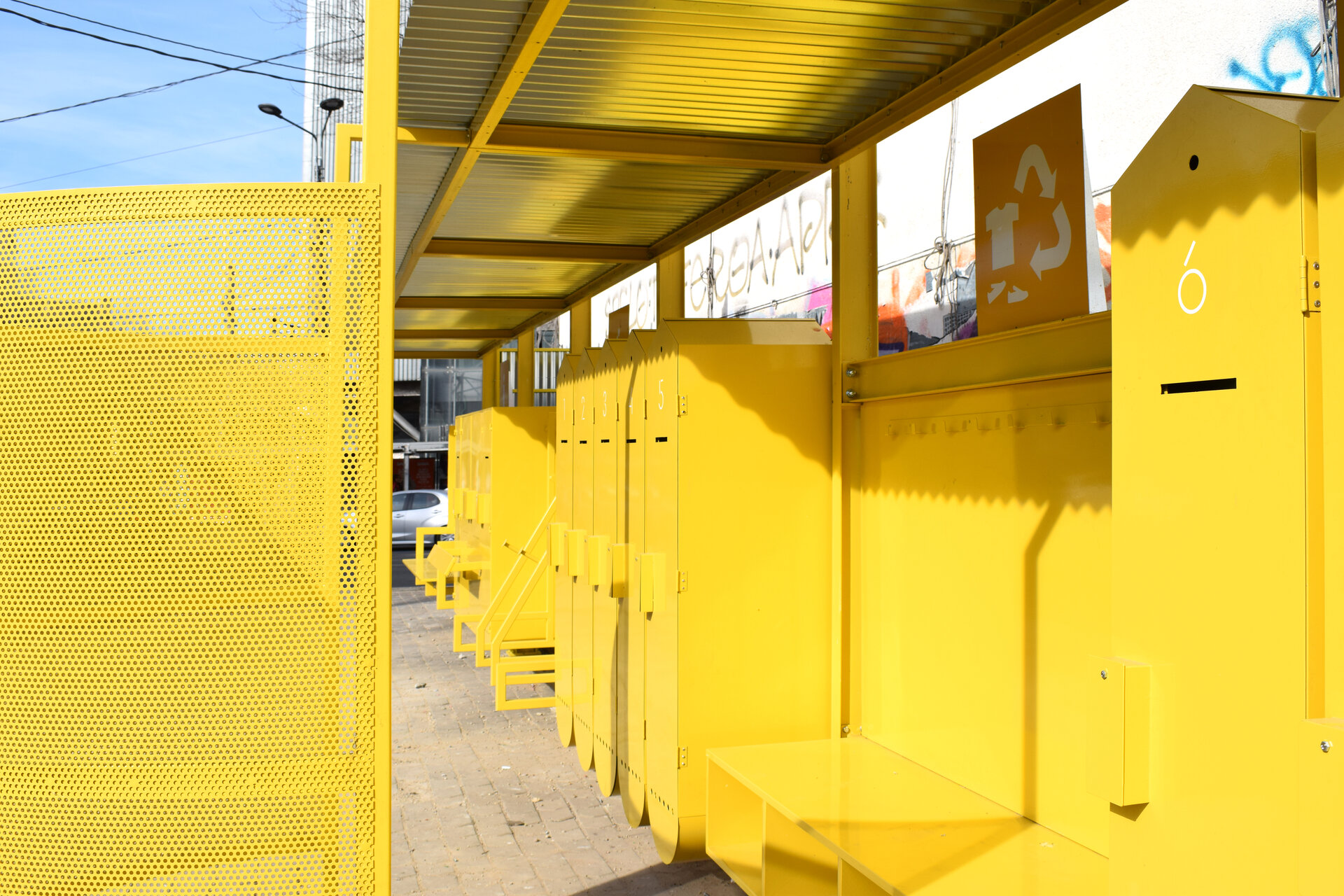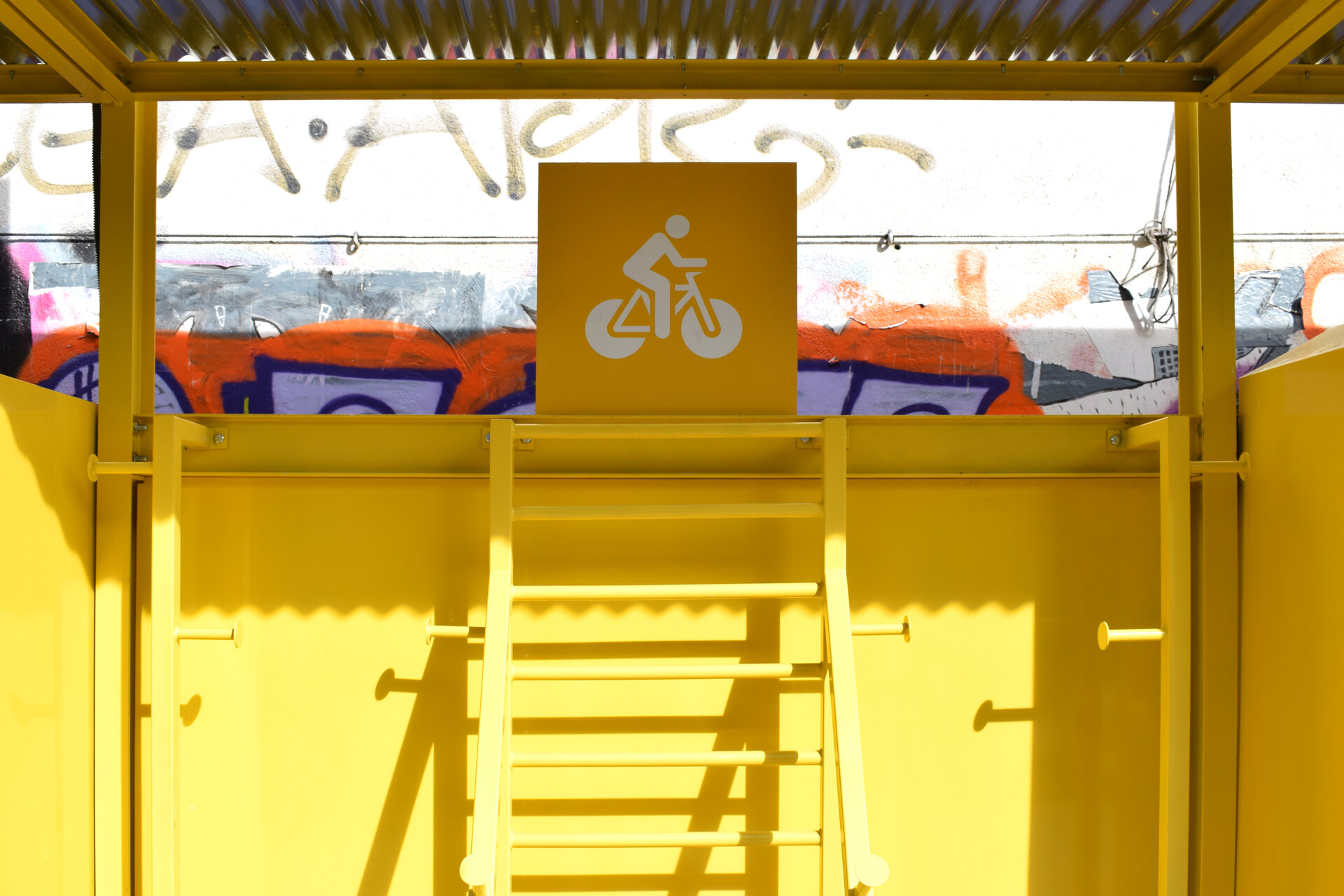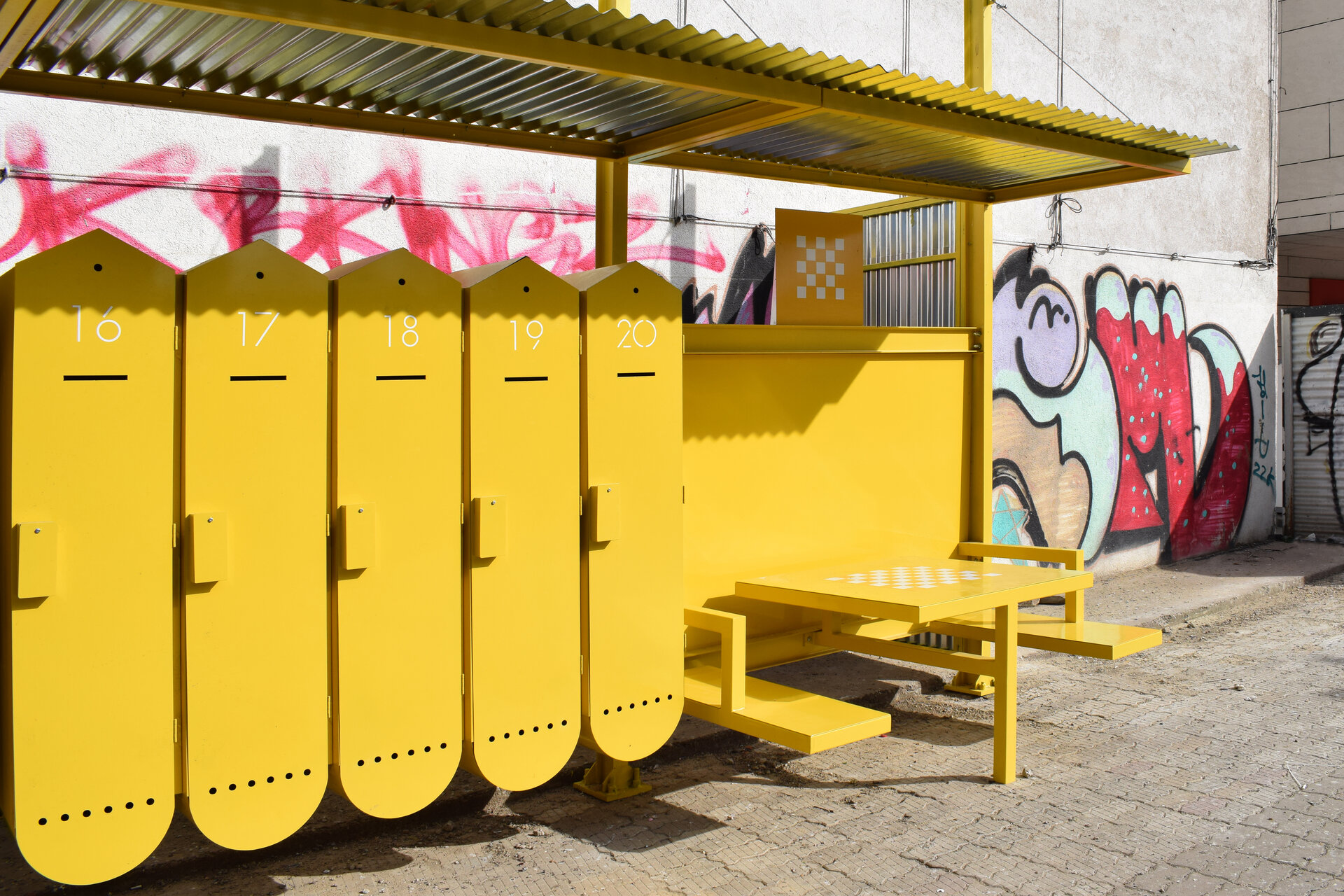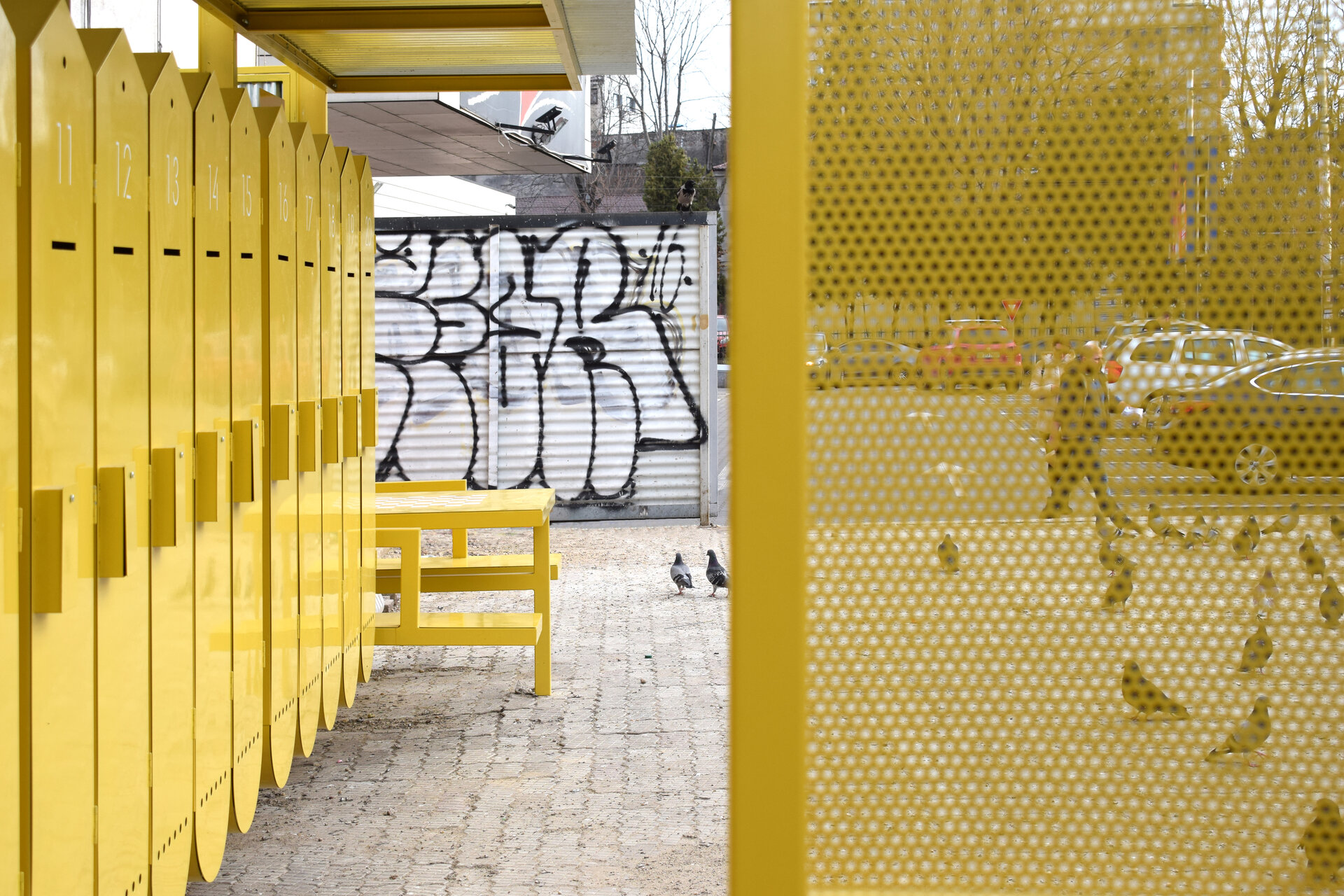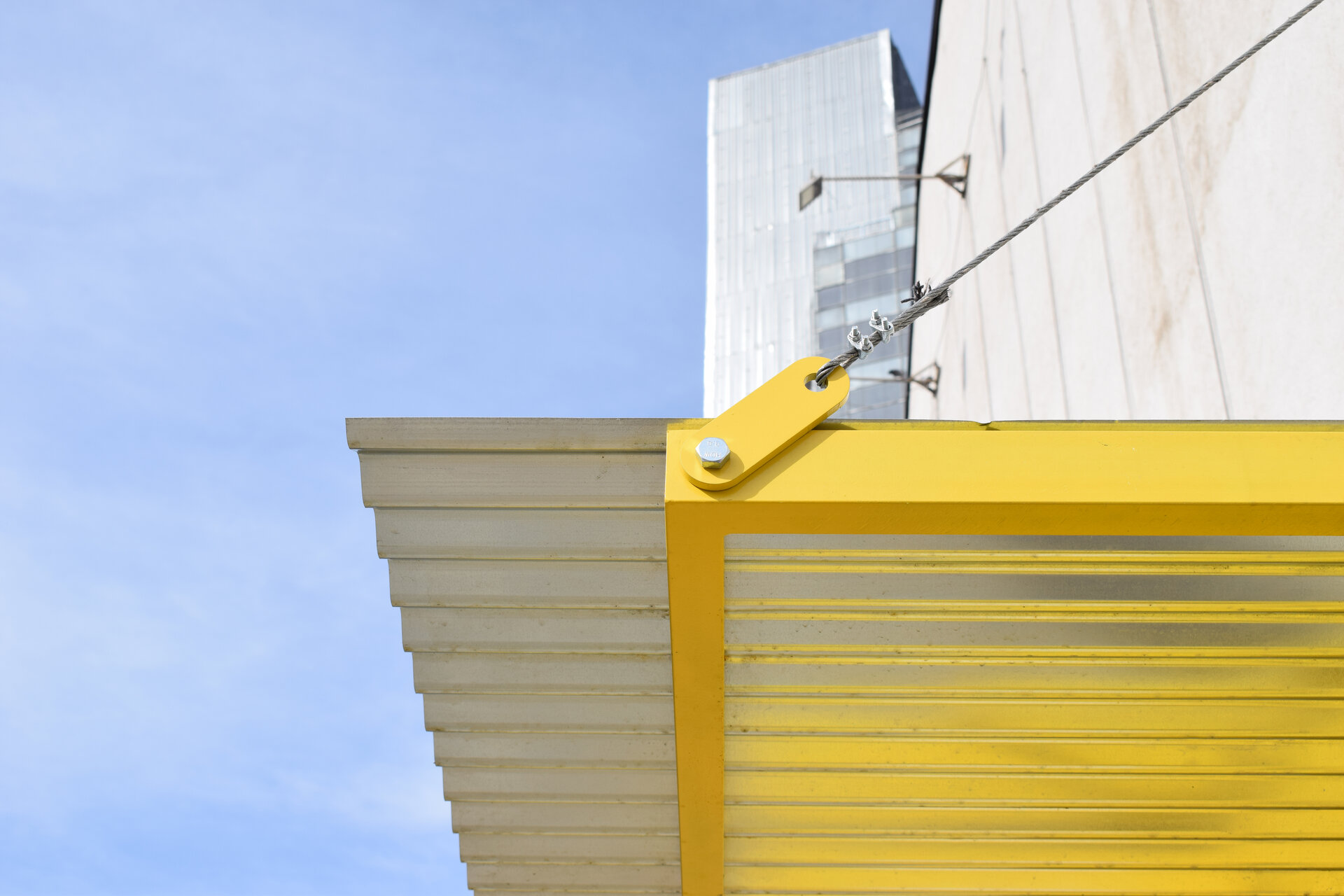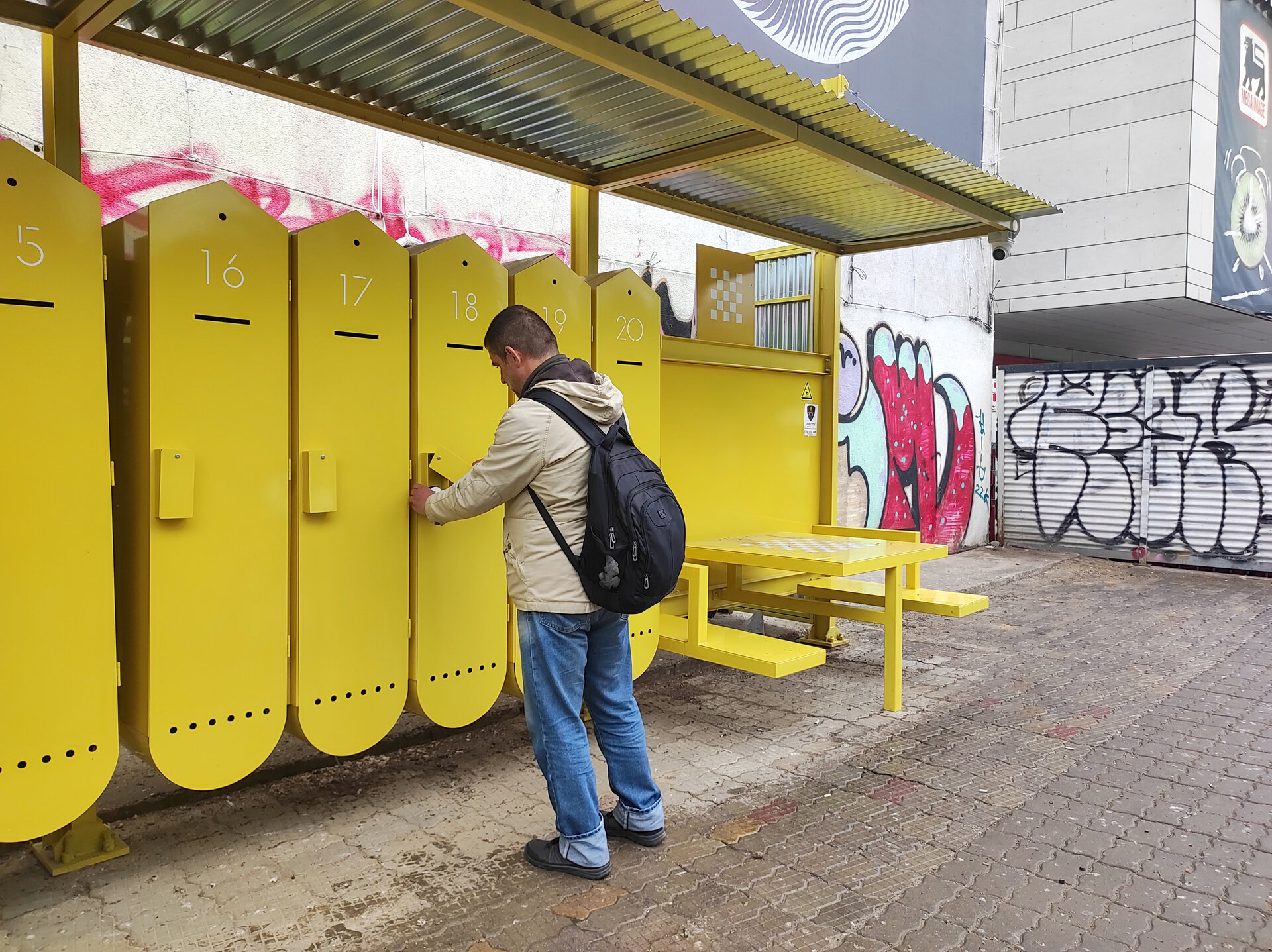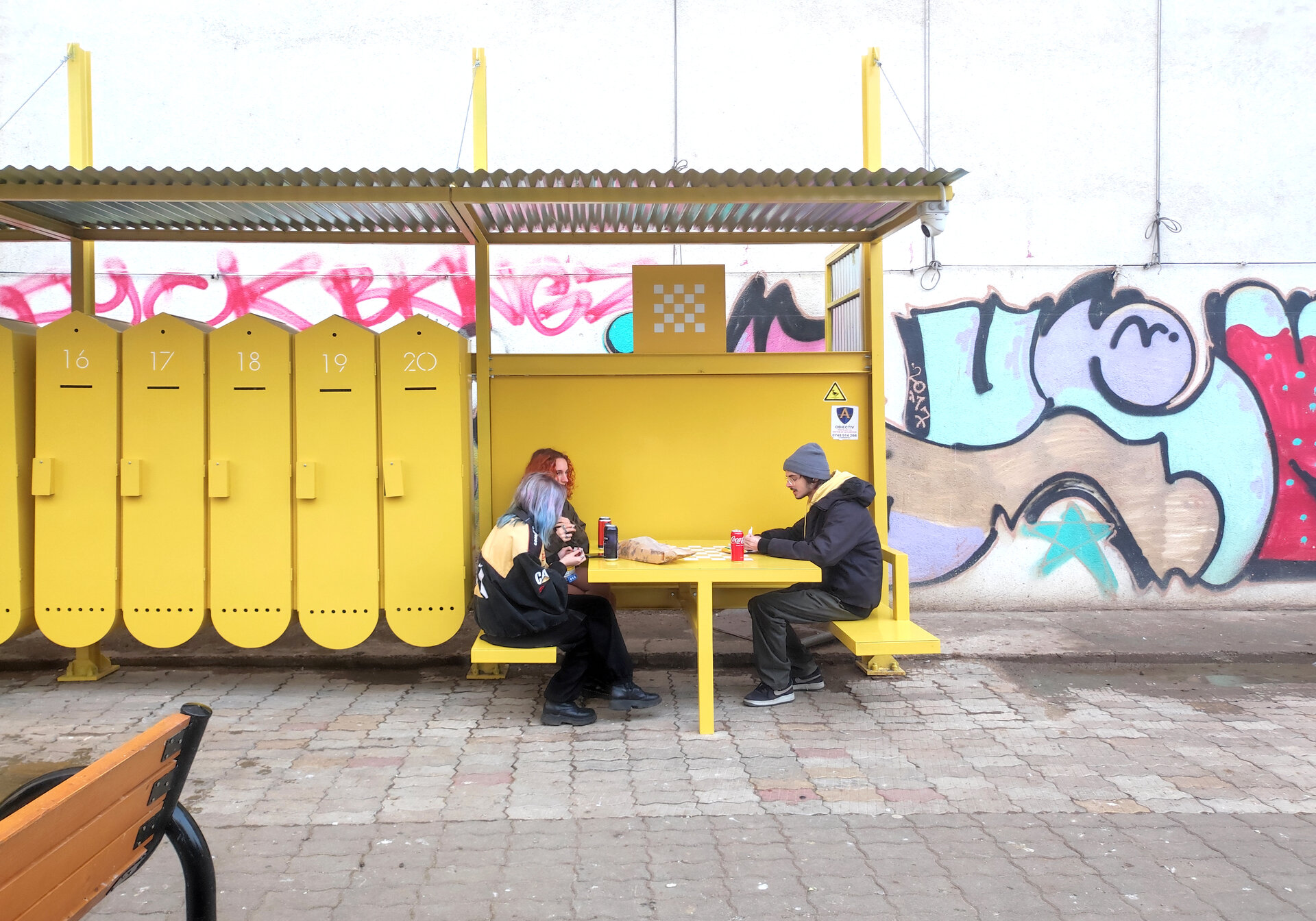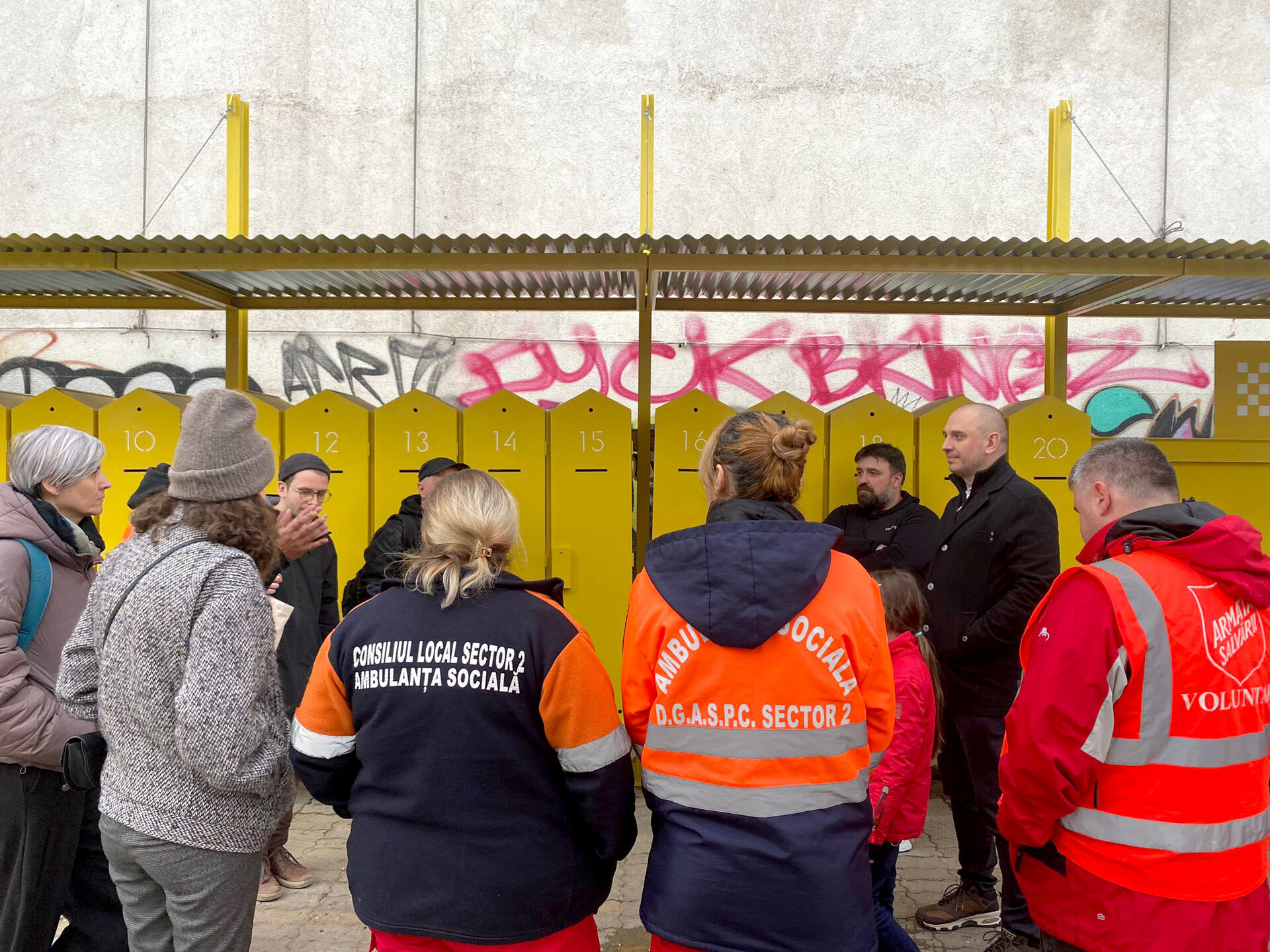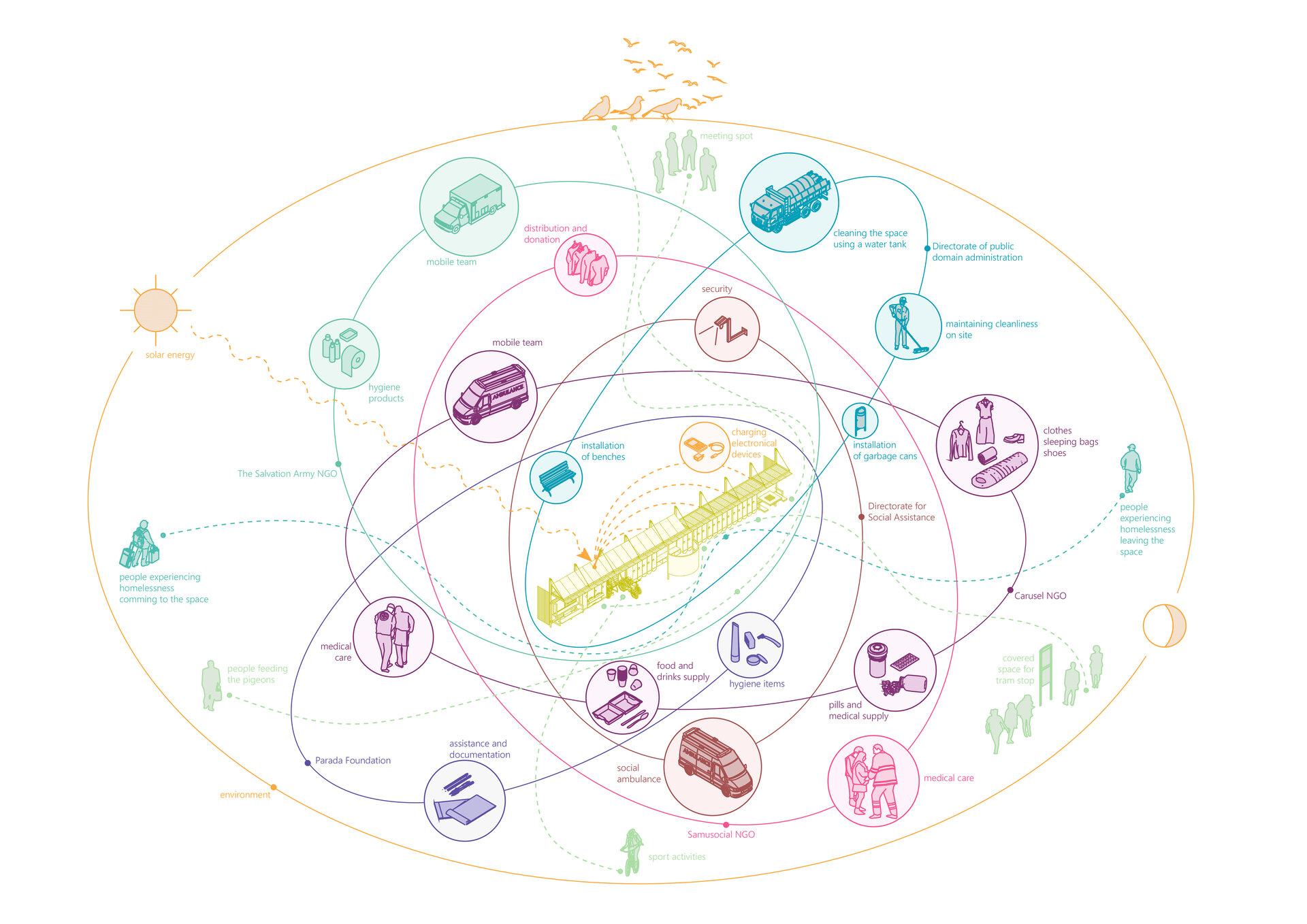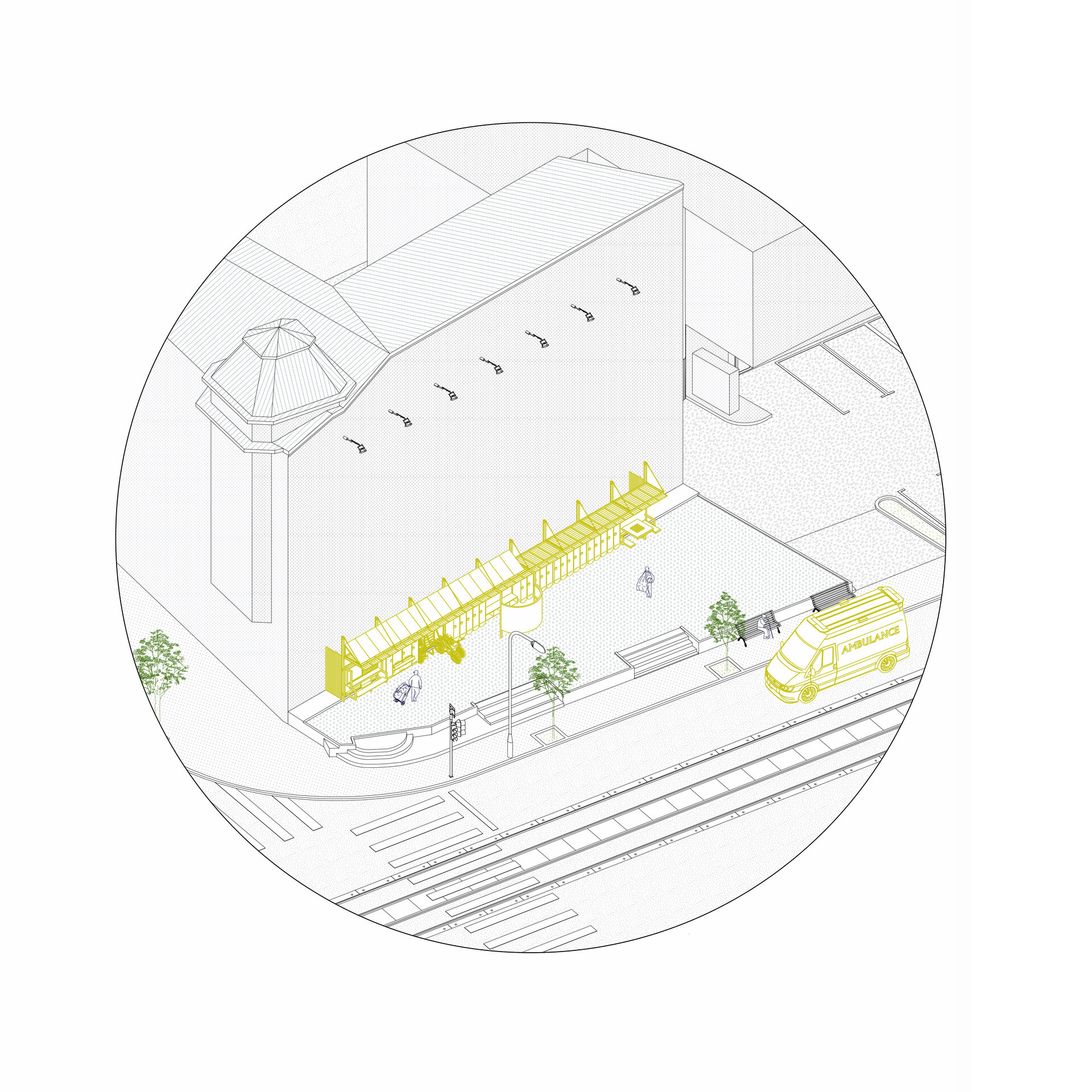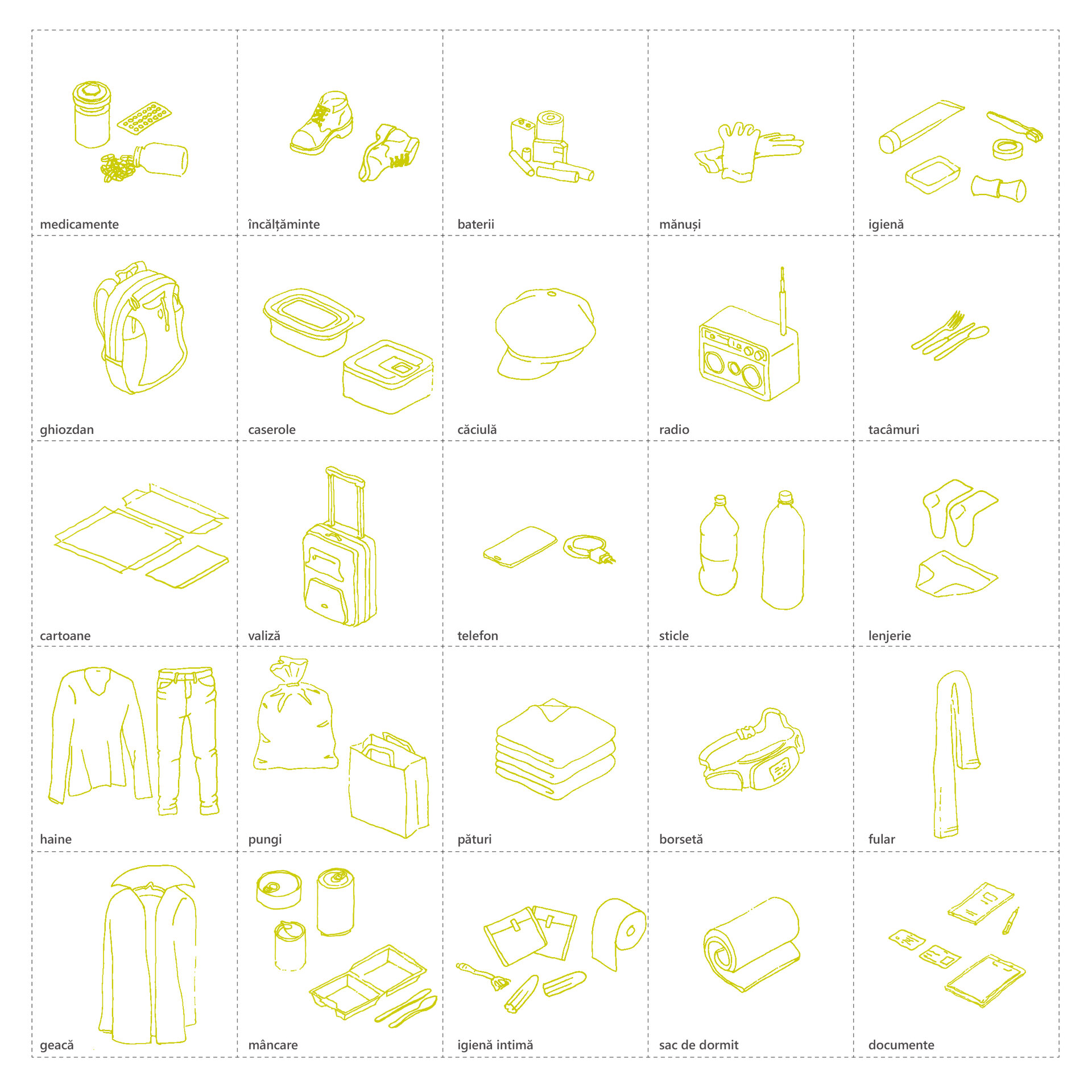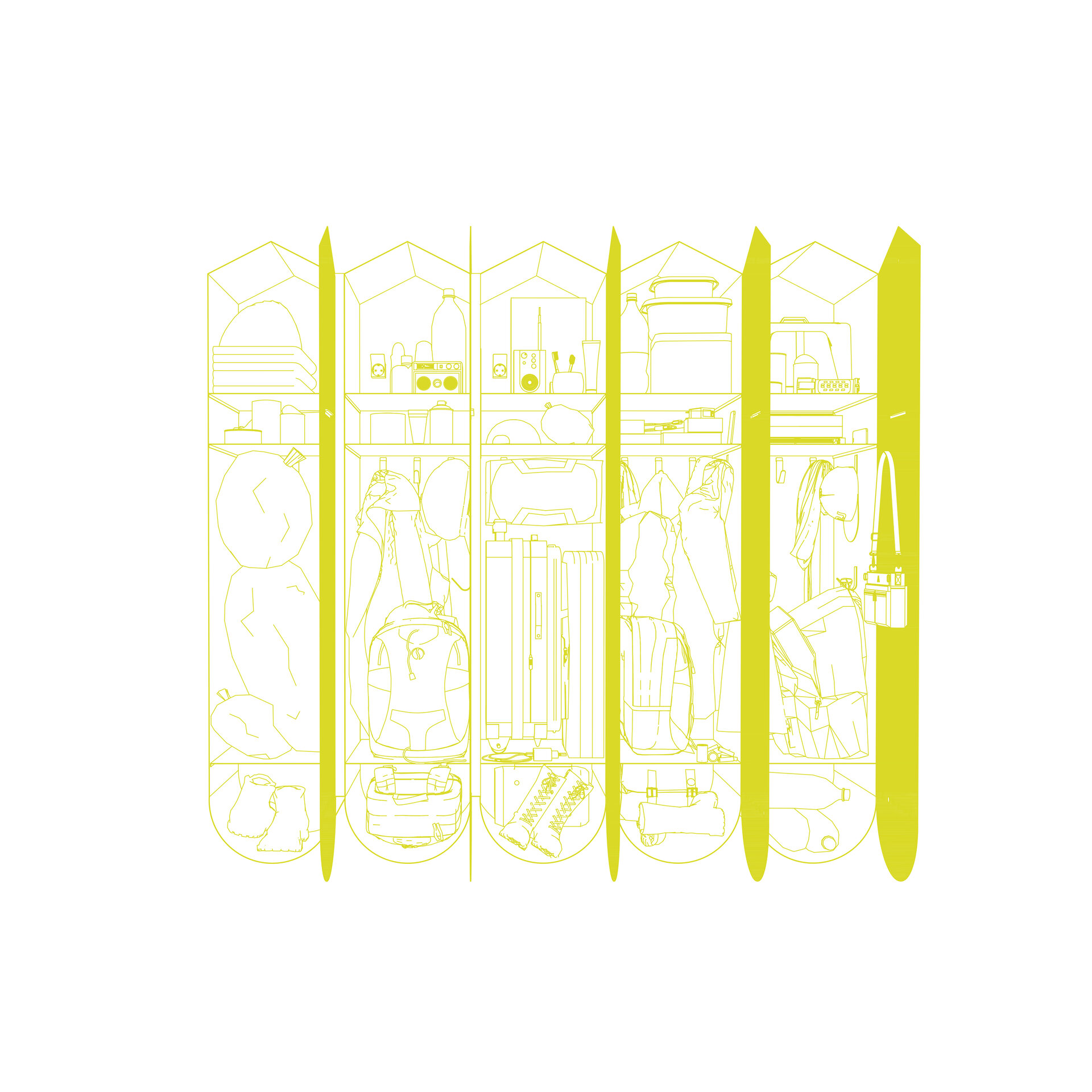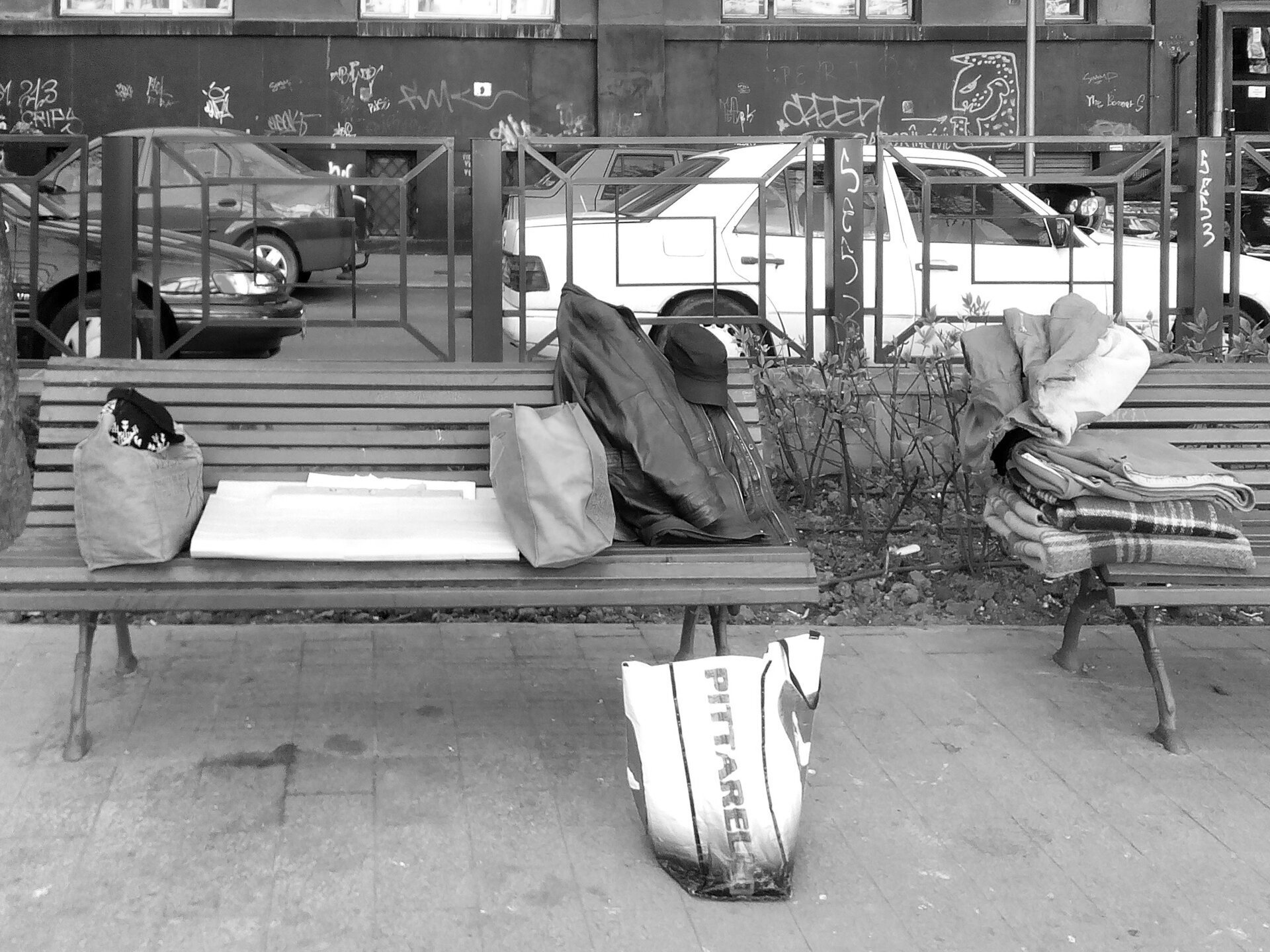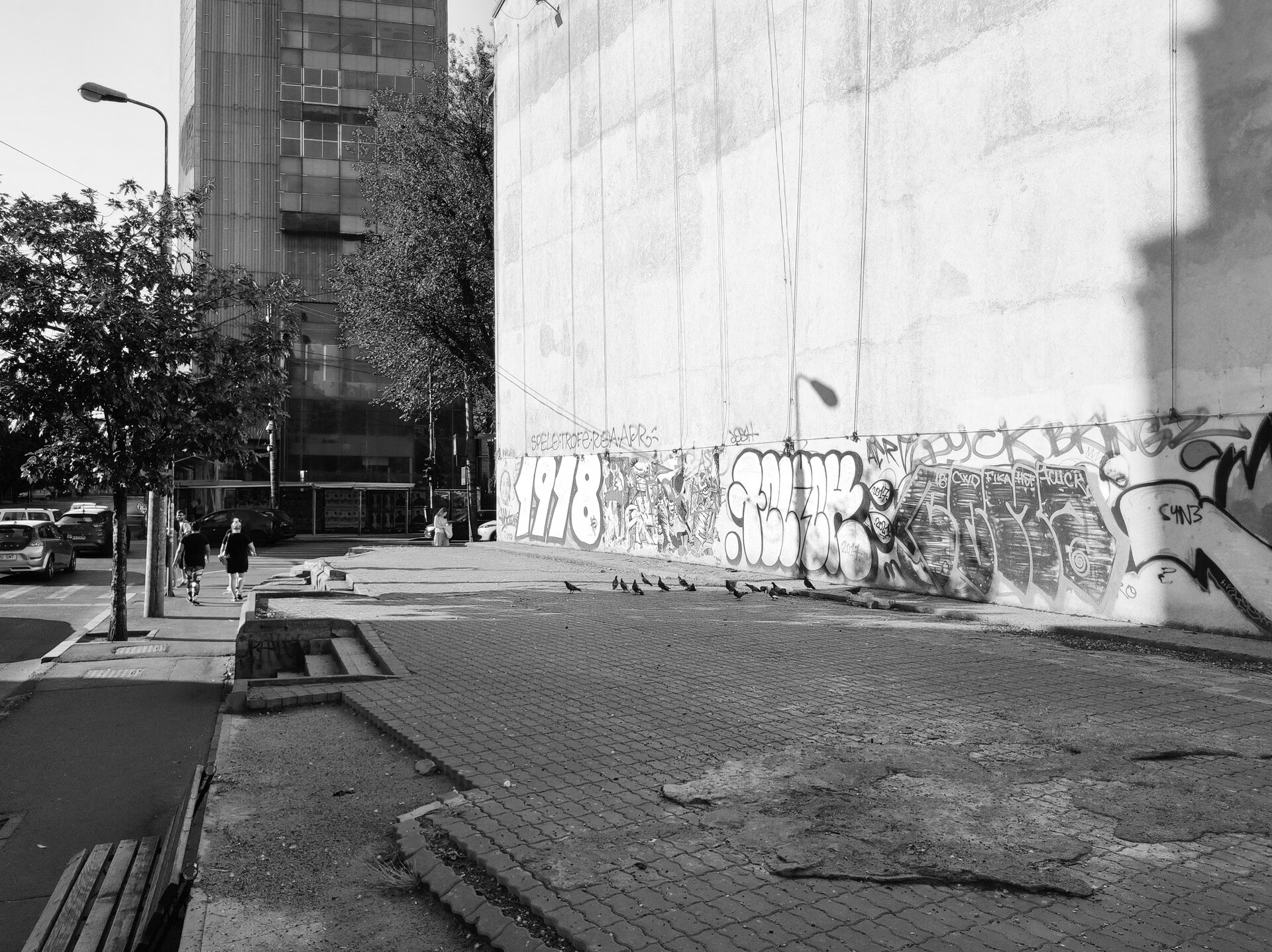
- Prize of the “Built Architecture / Architecture and Public Space” section
- The Best Architecture Client
Space for Solidarity – pilot project
Authors’ Comment
In Bucharest, homelessness is one of the most precarious forms of living in relation to vulnerable social groups. This condition requires flexible ways of response, both for urgent reactions and for long-term assistance. Many homeless people develop their living network in central areas, where they have access to safer spaces and more resources for survival. However, except for a small number of NGOs and public institutions, the municipal social services for this vulnerable group are located in peripheral and hardly accessible areas of the city. Also, the physical traces of homeless living situations are not tolerated in public space so people need to develop discreet ways of carrying out their daily activities.
One of the important needs identified in situations of living on the street is the storage and safekeeping of personal belongings. These are usually either carried throughout the day or hidden in various spaces in the city, which leads to their rapid deterioration, and the possibility of being stolen or thrown away by sanitation services. The lack of storage spaces contributes to the perpetual state of insecurity and uncertainty for people living in this situation.
Space for Solidarity is a project that addresses the precarious living conditions of homeless people in Bucharest while reclaiming a neglected urban space for collective use. It creates space and visibility for existing infrastructures of care both from the public and the non-governmental sector, becoming a fixed point for the mobile teams that take part in the initiative. The project was initiated in 2022 and involved forming a network of partnerships and responsibility for co-managing the space. The intervention site is a previously abandoned and unused public space, located in a central area the city that has intense pedestrian and vehicular traffic. Local institutions are involved in offering the space for developing this local initiative and take care of the physical maintenance of the structure while introducing this test site as a point of municipal social services infrastructure. A group of four NGOs are handling the daily on-site activities and keeping contact with the homeless users of the space.
The physical infrastructure consists of a modular structure displaying a covered space that offers access to twenty individual units for storing personal belongings equipped with electricity using Off-Grid photovoltaic panels. A series of complementary public furniture opens the space for new collective uses. It consists of benches and tables at different heights, a changing space, a display point and an area for sports activities that simultaneously functions as a bicycle rack. The covered space offers protection to all people in transit or those waiting at the tram station.
The place offers a space to practice, test and experiment with different ways to deal with crisis situations and forms alternative visions for more inclusive forms of conviviality. When placing infrastructure for the vulnerable on the outskirts of the city is the norm, the presence of a central visible public space that questions accessibility, living conditions and expectations of public space becomes a moment that in can contribute to changing the paradigm of urban spatial politics.
- Space for Solidarity – pilot project
- A Place to Catch One’s Breath- București
- Drăgaica Garden (peri)urban regeneration intervention
- Heritage landscape regeneration of the Peleș Domain
- As above, so below
- Acces Amestec Festival - “Touch the sky”
- Biutiful Exhibition Pavilion
- The loneliness of the revenant trees: anti-deforestation manifesto
- Skytower Urban Garden
- Mirror Your Community Installation
- Urban Metamorphosis - Navigating the labyrinth of change
